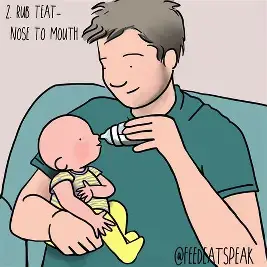
Paced Feeding

Elevated Side-Lying

The Top Up Trap
I have seen as a lactation consultant how Introducing a bottle to your baby in the early days and weeks could set you up for a tricky road ahead, especially if you don’t know how to get around these challenges. Early introduction of a bottle before five weeks of age has been shown to increase nipple confusion in infants (Chanprapaph et al., 2022).
Challenge One: Milk Supply
So, let’s imagine, you are giving your breastfed baby a bottle, this may contain expressed breastmilk or formula. It is important at this time, to express to ensure that your body gets the message that more milk is required. If you don’t remove milk from your breasts, (pump) around the time your baby drinks a bottle, then your body will say ‘hey, we don’t need this milk’ and begin to make less. This is due to the ‘Feedback Inhibitor of Lactation’ , which is a protein in your breasts, that builds up when less milk is removed.
I like to remember this as DR.FIL- Don’t Remove milk = Feedback Inhibitor of Lactation.
You also may have heard of the top up trap, which is a similar concept, and shows how not removing milk when giving a bottle can be a vicious cycle.
Challenge Two: Bottle Preference
Your baby may develop a bottle preference for certain reasons:
The flow of milk from a bottle will come out quicker and with less sucking effort than at the breast.
When a baby is at the breast, they need to suck, suck, suck, until the milk begins to flow at the breast when oxytocin is released, triggeing the let-down reflex. With a bottle, they do not need to do this, UNLESS we do it for them. Offering your baby an empty teat for 10-20 sucks before slowly tipping the bottle up to let some milk flow may help a baby feel they are at the breast and therefore, go back to the breast with less issues.
Paced bottle feeds will also help with a flow preference issue. Ensuring your baby is sitting upright (not in the nook of your arm) or in an elevated side lying position (you can do this with your feet up on a small stool (think a kid’s step for the toilet), place a pillow under your baby and this will have them at an elevated angle.
Ensure the bottle teat is only ½ to ¾ full and at a straight angle, this will ensure the flow is not too fast and your baby will be able to pace themselves and breathe, take breaks, during the feed.
Challenge Three: Altered Latch/Feeding
The shape of your bottle teat and how you introduce the bottle also affect how your baby goes back to the breast. A study done on two types of teats: a nipple shape teat and a triangular shape teat, showed that there was less breast refusal with the triangular shaped teat. Search the ‘triangle test’ to find out more about bottle teat shapes. The study is linked below.
Introducing the bottle so that the baby has to open up wide to latch on to the bottle may also help with the baby coming back to the breast.
For more information, take my ‘prepare to breastfeed class’ or book an antenatal consultation : Services Offered | Mothernurture.ie
Shoot me an email if you have any queries or Contact | Mothernurture.ie
Nuala
Links:
Stacey Zimmels providing feeding and speech therapy support for infants and children
Add comment
Comments